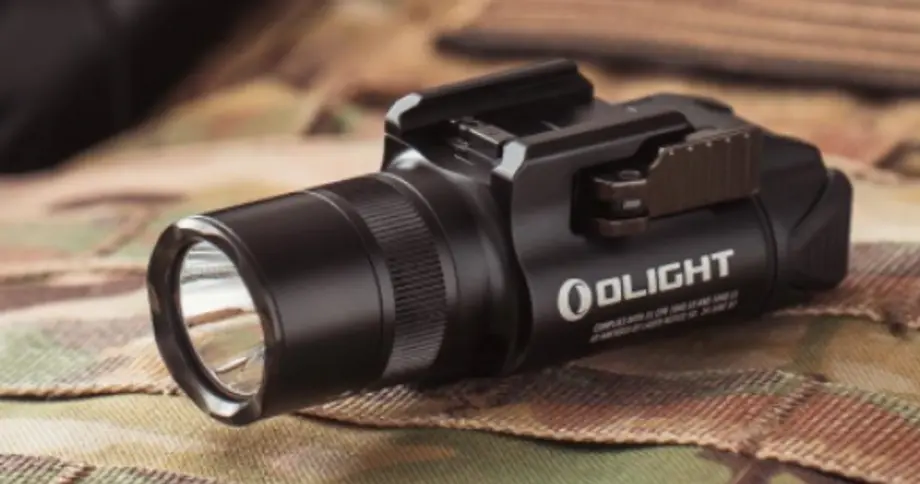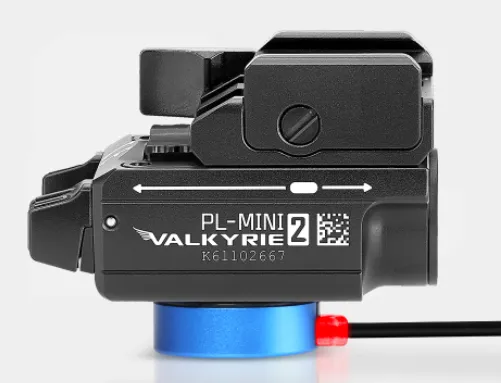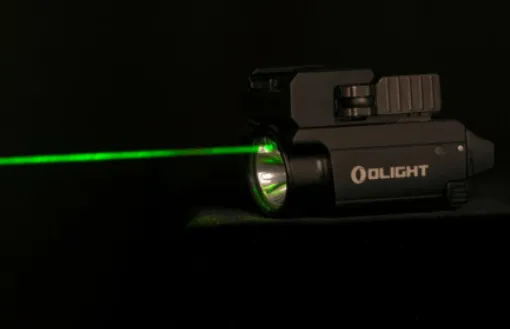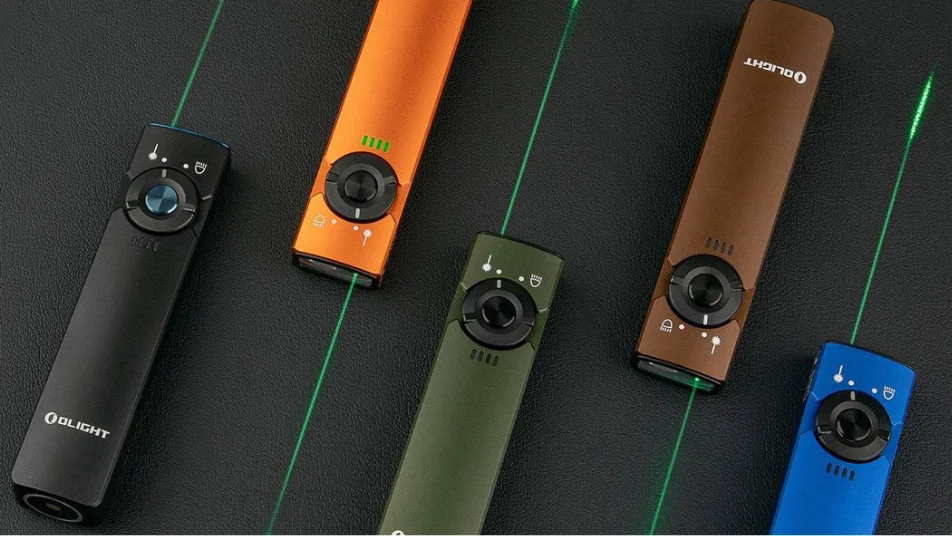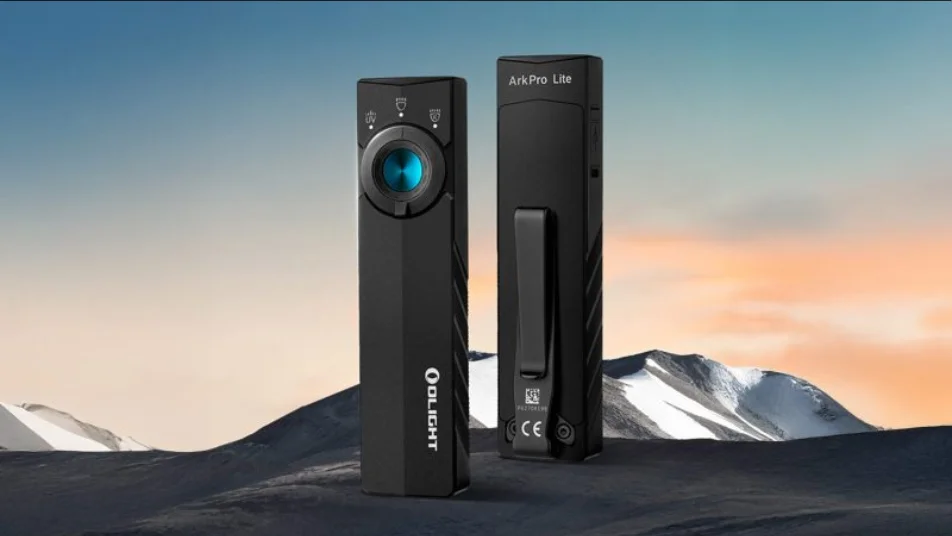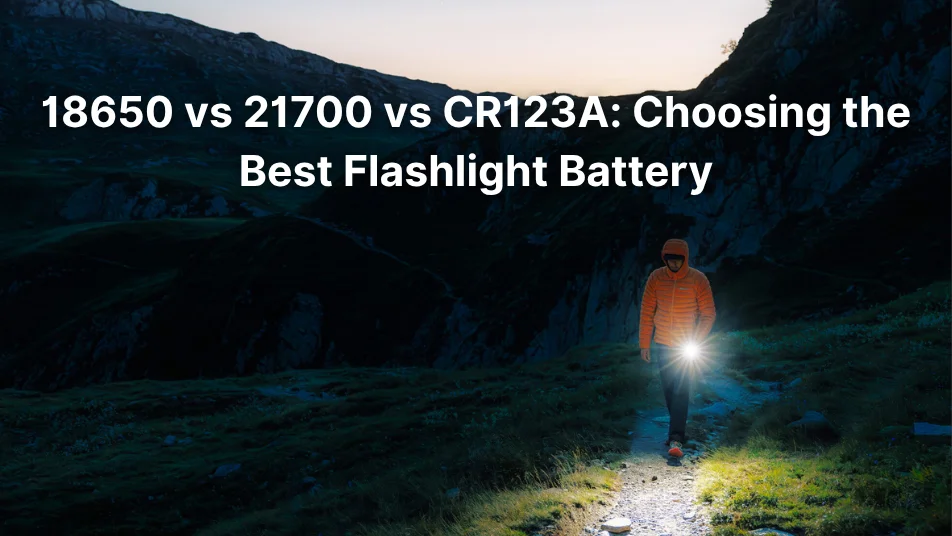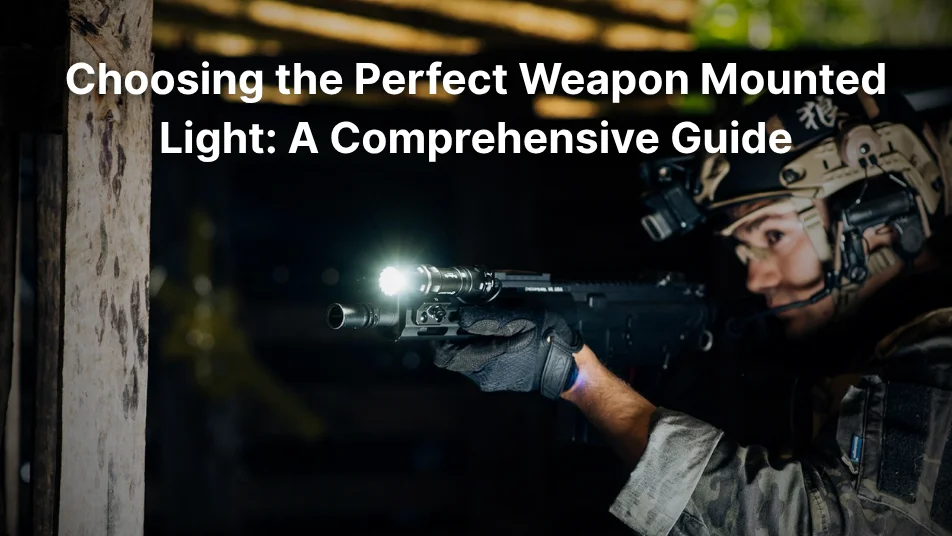A tactical light is a flashlight used with firearms to assist users in identifying targets in low-light environments, allowing shooters, law enforcement officers or soldiers to aim their weapons at the target. The tactical light can be hand-held or mounted on the weapon, and the light source is parallel to the barrel of the gun. Tactical lights also function as non-lethal force, temporarily blinding and disorienting the target, or as a baton in the case of the large metal Maglite with 1 (D) dry battery for police use. Features particularly relevant to tactical lights include impact resistance, reliability, lightweight construction, and a strong and long-lasting battery as well as light intensity. Tactical lights can be fitted with optional filters to produce colored light (eg, red light, to protect the user's night vision goggles), or light heads that emit only infrared radiation and are used with night vision goggles. Aiming laser functionality can also be added to weapon-mounted tactical lights.
1. Ordinary tactical light composition
Since tactical lights are intended for use in situations where lethal force may be used, their reliability is important.
Battery
Due to the long shelf life, high energy, and the gradual voltage decay of the battery during the life of the disposable lithium battery, it is usually used as a power source for tactical lights. Alkaline batteries also have the advantage of moderate shelf life and lower initial costs. Under intense lighting conditions that require a high current draw, the high internal resistance of alkaline batteries can cause their effective capacity to drop. As the discharge rate increases, its internal resistance wastes most of the battery's energy.
On the other hand, lithium-ion batteries have lower internal resistance, so they are usually the battery of choice when a high discharge rate relative to the rated capacity is required. Moreover, lithium batteries have better power supply performance than alkaline batteries in cold weather. High-quality lithium batteries are also less prone to leaking their electrolyte than alkaline batteries.
Rechargeable batteries, such as NiMH and NiCd, are an economical choice for lighting gun lights. But both lose capacity faster than alkaline and lithium batteries, which limits the use of rechargeable batteries. But using lithium-ion or low self-discharge NiMH batteries can extend the shelf life of rechargeable batteries used in tactical lights. Several new tactical lights even include the ability to charge with a USB cable.
Light bulb
Tactical lights choose bulbs based on desired light output and battery life. Usually, high-performance bulbs are used, such as xenon bulbs or high-power LED lamps.
LEDs offer the longest battery life due to their energy efficiency, and technology in the 2000s has greatly increased the light output of LEDs.
Once, xenon bulbs provided the brightest light source, but recent high-power LEDs are brighter and more efficient than comparable xenon incandescent bulbs. Most importantly, because of its internal structure, LED bulbs can avoid the phenomenon of filament breakage caused by the recoil of firearms. Recently in high lux, high-efficiency white LEDs have sparked a trend to produce brighter and more energy-efficient tactical lights.
2. The type of lighting
Tactical lights can be equipped with lenses to emit a certain color, and colored lights or filters provide flexibility that can be used for different purposes. Red lights are the best light for law enforcement officers to protect night vision goggles because they have the least effect on the rod cells in the eye, while blue light provides high contrast for detecting blood. Light in the infrared spectrum can only be seen with night-vision goggles, making it clearly visible to the operator while reducing the field of vision for those not equipped with night vision goggles.
Some tactical lights are combined with laser sights to become multifunctional components that can provide targeting, illumination, or both in low-light environments.
Hand-held flashlights were introduced around 1900 and are divided into dry batteries and incandescent lamps. Early-type bulbs were often too fragile to survive the acceleration of the firearm's recoil. In 1912, a U.S. patent was issued for a night sight for firearm demonstrations above a revolver, with the bulb mounted in the shock absorber below the barrel, and the grip modified to accommodate the battery and hold the pressure switch.
Weapon-mounted lights (sometimes referred to as "gun lights") can be used hands-free, allowing the user to freely use their hands to control the weapon. For example, when using a rifle, generally requires a pair of hands to use this type of weapon. Most gun lights have their switches mounted above a short wire and then mounted somewhere within easy reach of the shooter's fingers (like a handguard).
Weapon-mounted lights are most commonly used on rifles, shotguns, and submachine guns, but more recently small tactical lights mounted on pistols are also becoming more common. These lights are generally more expensive than handheld lights because they must be strong enough to withstand the recoil of a firearm, and specialized mounting hardware adds to their price. One disadvantage of a light mounted on a weapon is that it is always aimed parallel to the barrel, so illuminating something also means it is being pointed at by the weapon. Therefore, depending on some ROEs, lights mounted above weapons can be counterproductive.
Lights mounted on weapons used to be on specific firearm models, and still do to some extent today. For example, the Olight Odin GL mini can only fit on PIC rails.
On the other hand, many modern weapons incorporate a Picatinny rail system that can be used to attach any tactical attachment that fits Picatinny compatible. Other mounting systems are simple clamps designed to mount most cylindrical lights above and parallel to the barrel of most firearms.
Of course, most of the Olight tactical lights are compatible with Pic rails and Mlok rails, and we will have related accessories. As long as the target is not equipped with night-vision goggles, the use of infrared lights with night vision goggles can reduce the concern of exposing the user's location, which also reduces the risk of disturbing the target night vision goggles with visible light tactical lights.
Long-range weapon lights and extended ranges have always been a problem for police special weapons and tactical units. Some tactical weapons lighting companies—Extreme Beam for example—have been able to produce compact, lightweight duty gun lights that special police officers can fit with modern weapons, extending their night-time range to more than 300 meters, which can blind suspects and protect officers from detection to better resolve the situation with non-lethal force.
3. Advantages of tactical lights with laser
Traditional white LED tactical lights will have insufficient penetrating power and limited vision on the battlefield filled with gunpowder smoke. Using the LEP laser module as the light source, the luminous efficiency is higher, the power consumption is lower, the fog permeability is stronger, and a longer range can be achieved. Compared with the traditional LED light source, the laser output is more stable, uniform, and concentrated, which can completely eliminate the floodlight. The LEP laser module brings strong long-range shots and clear vision in the smoke, which can easily lock the target and gain search time.
The light source is more reliable
Laser products with different wavelengths and powers will cause damage to the human body. Some laser flashlights on the market are not certified for safety, which may cause damage to the user's body. The International Electrotechnical Commission has classified the safety level of laser products, and the safety level is from high to low: Class1, Class1M, Class2, Class2M, Class3R, Class3B, Class4. Class 1 is a safe and non-hazardous level.
The white laser light after safe processing is filtered out of blue light, thus outputting a yellow light beam (4500~5000K), which is not only safer for the human body, but also has stronger penetrating power in the smog. Even if the smog is full, it still has a strong irradiation ability. The tactical light uses the LEP laser light source to have a stronger focus, the light can directly break through the smoke and fog, the luminous efficiency is higher, and the power consumption is lower.
At present, there are still a few LEP light sources used in tactical lights, and many laser flashlights in the domestic and foreign markets have not been certified for safety, its laser light source eliminates the hazard of a single laser and has passed 4 international safety certifications: Class 1 non-hazardous safety level laser, in terms of evaluating the blue light hazard level, the optical biosafety reaches RG2 level, as well as the US FCC and FDA certification.
Small size, strong function, high precision
Lightweight tactical equipment is undoubtedly the favorite of fighters. It is not only easy to carry, but also "stealth" when installed on weapons. The normal laser tactical light is only 57 mm long, which is equivalent to the length of the thumb of an adult woman, and the volume is very small and pocket-sized. However, the energy is extremely powerful among the same type of tactical lights, with a maximum output of 600 lumens of brightness, a maximum range of 130 meters, and a battery life of up to 40 minutes. It can be illuminated both constantly and tactically, which can fully meet the lighting needs during the duty process.
As light weapon optical aiming equipment, the laser sight is mainly used to assist in aiming at the target, allowing fighters to respond quickly and shoot efficiently. In urban combat applications, laser tactical lights are of great significance for urban counter-terrorism and emergency handling.
The above is all about the introduction of tactical lights. If you have any additional instructions, please comment below. Thanks for your reading.

